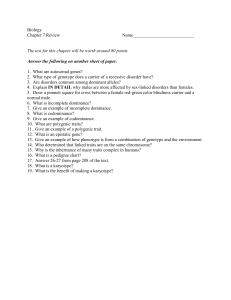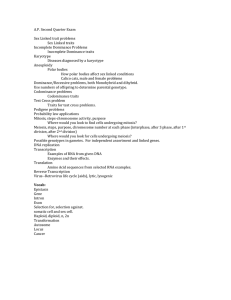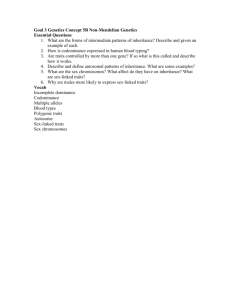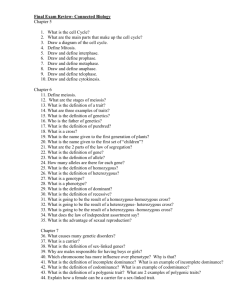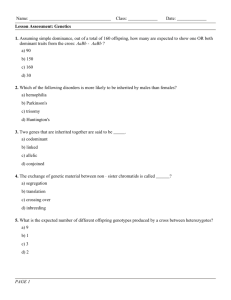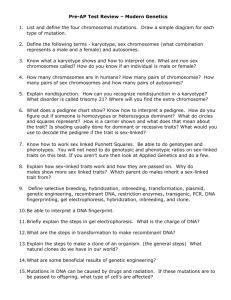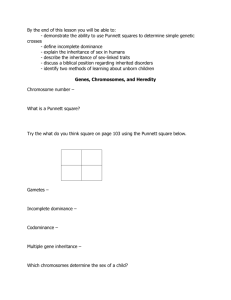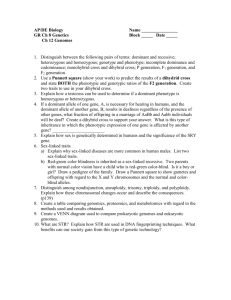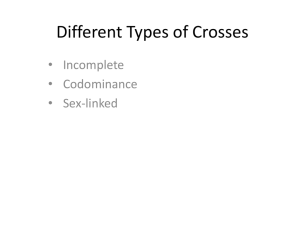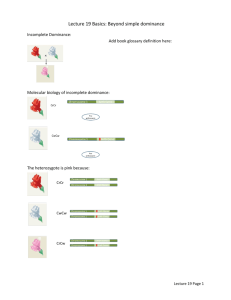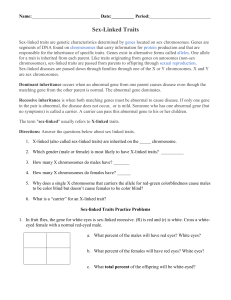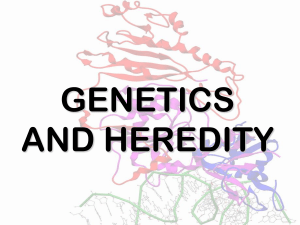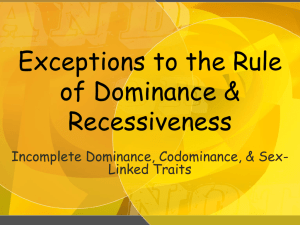Study Guide for Test on Chapter 11 and 14-1, 14-2
advertisement
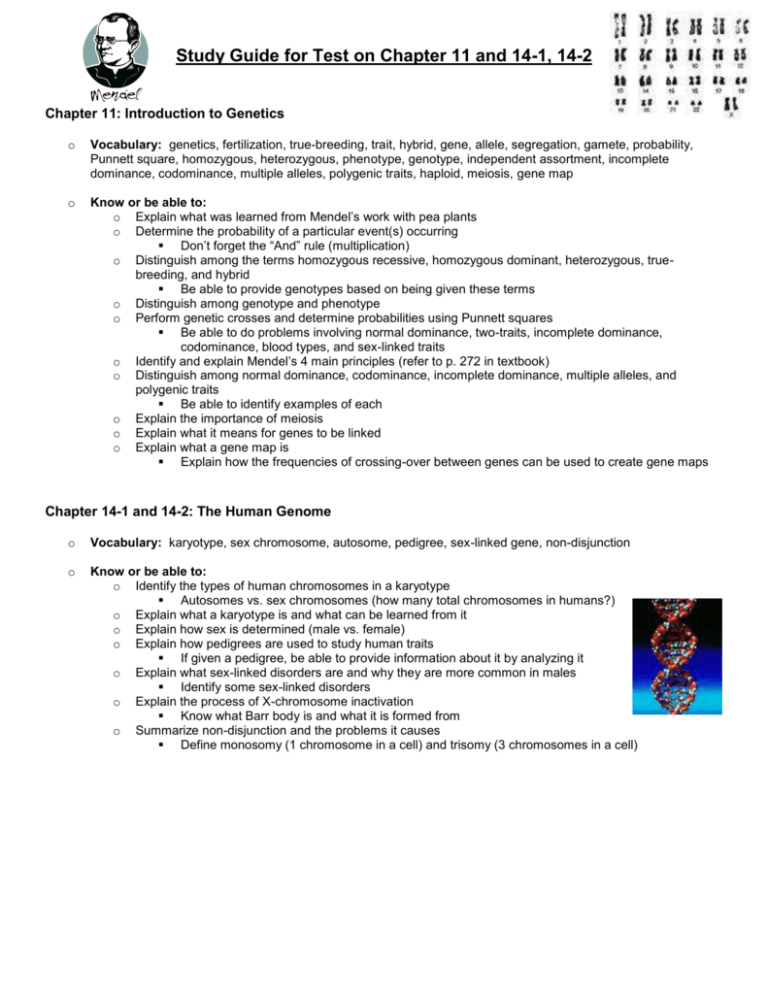
Study Guide for Test on Chapter 11 and 14-1, 14-2 Chapter 11: Introduction to Genetics o Vocabulary: genetics, fertilization, true-breeding, trait, hybrid, gene, allele, segregation, gamete, probability, Punnett square, homozygous, heterozygous, phenotype, genotype, independent assortment, incomplete dominance, codominance, multiple alleles, polygenic traits, haploid, meiosis, gene map o Know or be able to: o Explain what was learned from Mendel’s work with pea plants o Determine the probability of a particular event(s) occurring Don’t forget the “And” rule (multiplication) o Distinguish among the terms homozygous recessive, homozygous dominant, heterozygous, truebreeding, and hybrid Be able to provide genotypes based on being given these terms o Distinguish among genotype and phenotype o Perform genetic crosses and determine probabilities using Punnett squares Be able to do problems involving normal dominance, two-traits, incomplete dominance, codominance, blood types, and sex-linked traits o Identify and explain Mendel’s 4 main principles (refer to p. 272 in textbook) o Distinguish among normal dominance, codominance, incomplete dominance, multiple alleles, and polygenic traits Be able to identify examples of each o Explain the importance of meiosis o Explain what it means for genes to be linked o Explain what a gene map is Explain how the frequencies of crossing-over between genes can be used to create gene maps Chapter 14-1 and 14-2: The Human Genome o Vocabulary: karyotype, sex chromosome, autosome, pedigree, sex-linked gene, non-disjunction o Know or be able to: o Identify the types of human chromosomes in a karyotype Autosomes vs. sex chromosomes (how many total chromosomes in humans?) o Explain what a karyotype is and what can be learned from it o Explain how sex is determined (male vs. female) o Explain how pedigrees are used to study human traits If given a pedigree, be able to provide information about it by analyzing it o Explain what sex-linked disorders are and why they are more common in males Identify some sex-linked disorders o Explain the process of X-chromosome inactivation Know what Barr body is and what it is formed from o Summarize non-disjunction and the problems it causes Define monosomy (1 chromosome in a cell) and trisomy (3 chromosomes in a cell)
